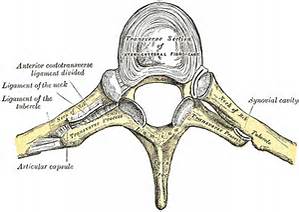Costovertebral joints are joints that connect your ribs with the vertebrae of the thoracic spine. These joints have a number of structures such as ligaments, cartilage and a joint capsule which are prone to injury. Injuries to these structures are termed as a costovertebral joint sprain or costovertebral dysfunction.
Costovertebral joints are used most commonly with movements such as twisting or breathing. Therefore, people with costovertebral joint dysfunction usually experience symptoms of pain or stiffness when turning their body, taking deep breaths and coughing or sneezing. The most common symptom of this injury is middle back pain which usually is felt worse towards one side of the spine and can be accompanied by pain that follows that particular rib line, even to the point where people may experience a form of chest pain.
It is very important to note that patients experiencing chest pain should have a medical examination to exclude other causes such as cardiac diseases.
Causes of costovertebral joint dysfunction include periods of prolonged sitting, particularly with poor posture, repetitive manual work with the arms out in front of the body or repetitive coughing or sneezing.
Treatment in the acute phase of costovertebral joint dysfunction involves joint mobilisation, stretching and massage to reduce any associated muscle spasm and restore full range of movement. Once the acute symptoms have resolved the best form of management or future prevention involves a postural assessment and a combination of strengthening and postural retraining.

